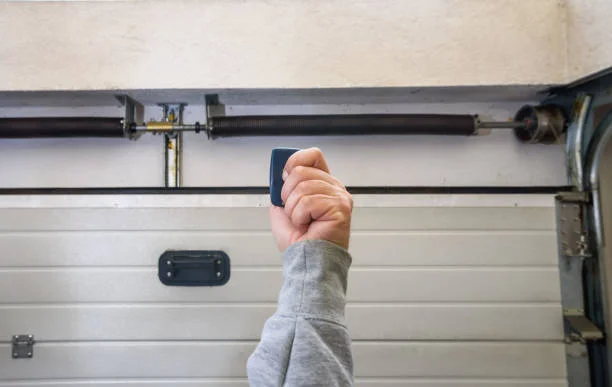Garage doors are among the most significant moving components in most homes, and their operation involves powerful motors and heavy panels. While convenient, they can also be dangerous if not properly equipped with safety mechanisms. Over the years, accidents involving garage doors have led to serious injuries and fatalities, prompting lawmakers and industry regulators to establish strict safety standards. One of the most critical advancements in garage door technology is the introduction of safety sensors, which prevent the door from closing when something obstructs its path. These sensors are not just modern conveniences—they are legal requirements designed to protect lives, property, and public safety across residential and commercial settings.
Understanding the Purpose of Safety Sensors
Garage door safety sensors serve a vital yet straightforward purpose: to detect obstacles in the door’s path and automatically stop or reverse its movement. Positioned near the bottom of the door tracks, these sensors use infrared beams to create an invisible line. When that line is interrupted—whether by a child, pet, or object—the door immediately reverses, preventing potential harm or damage. This system ensures that even if the remote or wall switch is activated accidentally, the door will not close on anyone or anything in its path. Beyond safety, these sensors also protect the door’s motor and mechanical components from stress caused by forced obstruction. Over time, this feature extends the system’s life and prevents costly repairs. They form an integral part of modern garage door design, balancing safety, efficiency, and regulatory compliance.
The Legal Background Behind Mandatory Installation
Safety sensors became a legal requirement in the United States and Canada in the early 1990s after numerous reports of garage door-related injuries, particularly among children. Regulatory bodies such as the U.S. Consumer Product Safety Commission (CPSC) and Underwriters Laboratories (UL) introduced updated safety standards that mandated all automatic residential garage doors to include these sensors. In Canada, similar safety provisions were adopted under national building and electrical codes. The legislation ensures that every newly manufactured or installed door includes sensor-based reversal systems. Failure to comply can result in legal penalties for installers and homeowners, depending on local regulations. For homeowners needing system upgrades or garage door repair in Abbotsford, BC, ensuring that safety sensors are correctly installed and functioning is not only wise but legally necessary. These laws exist to make sure that convenience never comes at the cost of human safety.
How Safety Sensors Prevent Tragic Accidents
Before safety sensors were mandatory, garage door systems relied on physical pressure to detect obstructions. Unfortunately, this often meant the door had to make contact with an object—or person—before reversing, which led to injuries and, in some tragic cases, fatalities. Safety sensors revolutionized this process by introducing preemptive detection. The infrared beam acts as a first line of defense, allowing the door to respond before any physical contact occurs. Children playing near garages, pets wandering under closing doors, and even vehicles left partially in the path are now protected from harm. These devices have drastically reduced the number of accidents nationwide since their introduction. They also provide homeowners with peace of mind, knowing that an additional layer of protection guards one of the most frequently used entrances to their homes. This combination of preventive technology and regulation has made modern garage systems both safer and more reliable.
Regulatory Enforcement and Homeowner Responsibilities
Government safety agencies have strict standards to ensure garage doors meet compliance before installation. Manufacturers must include sensors that meet specific sensitivity and response criteria, while installers are required to confirm proper alignment and operation. Homeowners, too, bear a degree of responsibility under the law. Disabling or removing sensors can violate safety codes and potentially void warranties or insurance coverage. Routine inspection is recommended, as even a minor misalignment can cause the system to malfunction. Regular cleaning of the sensors and ensuring they remain unobstructed helps maintain consistent performance. Many municipalities require annual or biannual safety checks, especially for properties that rent to tenants or serve public use. These requirements not only enforce accountability but also encourage long-term safety awareness. Proper maintenance and adherence to legal standards ensure that homeowners remain compliant while protecting their families from preventable hazards.
Technological Advancements in Modern Safety Sensors
Modern garage door sensors have evolved significantly since their initial introduction. Today’s systems feature improved infrared accuracy, wireless communication, and built-in diagnostics that alert users to malfunctions. Some models integrate with smart home systems, sending notifications if the door encounters an obstruction or fails to close correctly. These upgrades enhance convenience without compromising safety. The inclusion of self-testing mechanisms ensures that sensors continuously monitor their functionality, automatically stopping operation if a fault is detected. This proactive approach keeps systems compliant with current safety laws and minimizes the risk of accidents caused by human error or neglect. Advancements in design also make sensors more resistant to dust, sunlight interference, and temperature fluctuations. As technology continues to progress, safety sensors remain at the forefront of regulatory and consumer protection standards, combining innovation with life-saving practicality.
Consequences of Non-Compliance and Liability
Failing to comply with garage door safety regulations carries significant risks beyond physical injury. Homeowners and contractors who ignore these laws can face fines, legal penalties, and increased liability in case of an accident. Insurance companies may deny claims related to injuries or property damage if it is determined that safety sensors were missing, disabled, or improperly maintained. In rental properties, landlords are legally obligated to ensure that all automatic doors meet safety standards before occupancy. Non-compliance not only exposes property owners to legal consequences but also damages their reputation and trustworthiness. Maintaining functional safety sensors demonstrates responsibility and due diligence. These laws serve as a reminder that public safety takes precedence over convenience, and that neglecting such essential features can have lasting financial and ethical implications. Compliance protects not only those who use the system but also those legally responsible for its maintenance and operation.
The Connection Between Safety, Innovation, and Public Policy
The mandate for safety sensors represents how public policy can drive technological progress for the greater good. What began as a response to prevent household accidents has since become an international standard for modern engineering and consumer safety. Lawmakers, manufacturers, and homeowners collectively benefit from these regulations. They ensure consistent quality, encourage innovation, and create a safer living environment for families everywhere. The garage door industry continues to adapt by introducing more innovative and more efficient safety mechanisms, reflecting how laws can inspire continuous improvement rather than merely enforce compliance. By setting and updating these safety standards, authorities reinforce the message that convenience must always align with responsibility. These regulations ultimately form a bridge between innovation and human welfare, ensuring that technology serves to protect as well as perform.
Garage door safety sensors are not optional features—they are legally required components that protect lives and property. Their inclusion in every automatic door system represents a significant advancement in household safety and public policy. By preventing accidents before they happen, these sensors ensure that technology works in the service of human well-being. Homeowners, manufacturers, and installers all share a duty to maintain compliance, ensuring that every system operates within legal and safety guidelines. Regular inspections and maintenance reinforce the law’s purpose: to safeguard every household that relies on automatic doors. These legal requirements stand as a reminder that even small safety devices can have a profound impact, turning technology into a silent guardian for millions of homes worldwide.






